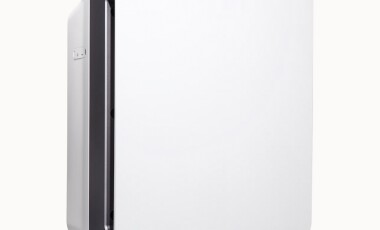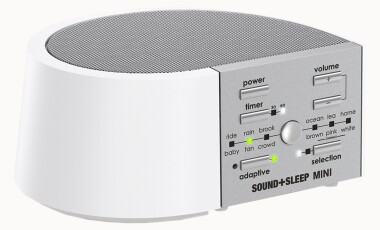More people are working from home than ever. In fact, a recent survey from Stanford University reports that over 40% of the U.S. labor force now works from home full-time. In this shift of transforming homes into office spaces, many people are having to get creative in order to get work done.
If you are living in a small or crowded space, this might mean that your bedroom now doubles as your home office. And if you don’t plan it correctly, that double-function might inspire bad bed behaviors that end up negatively impacting your sleep.
“You don't want to associate the bed with work; you want to associate the bed and bedroom with relaxation,” says Joseph Ferrari, Ph.D., a Vincent dePaul distinguished professor and social-community psychologist at DePaul University in Chicago. However, Ferrari also acknowledges that a clear separation of space isn’t always possible.
If that’s the case for you, there are a few design hacks that can help you create a dual-purpose space — without sacrificing your sleep.
Create zones to break up the room
When designing a combined work-and-sleep space, start by dividing up your room, recommends Anita Yokota, a licensed family and marriage therapist turned award-winning interior designer. Devote the largest section of your room to sleeping, she says, as space can indicate priority and prioritizing your sleep is key. While you may be tempted to break the room into two spaces — one for working and one for sleeping —Yokota also recommends making space for an additional zone: a reading nook, if you can.

“A comfy chair or bench in a quiet corner can be the perfect spot to read or take a break in, cutting down on you feeling like you’re chained to your desk all day,” she says. It’ll also help further stop your brain from associating being active with your bed.
One other tip? Ferrari suggests literally dividing the room into zones with a curtain, screen, or room divider. This may help to create the illusion of separate rooms — both visually and psychologically. Not only will this help your brain disassociate the two, but it also gives the added benefit of keeping your bed out of the background during video calls.
Choose multi-use furniture
You’ve heard the saying less is more, and when you’re dividing up a room to serve multiple purposes, this can absolutely be true in terms of the amount of furniture you fill the space with.
Investing in a few essential pieces that can multi-task is a great way to get more out of less. For example, Yokota suggests a furniture item like a sitting bench with built-in storage space. “It’s a great way to add both comfort and organization to a bedroom,” she says.
Other ideas include a storage bed, which includes pull-out drawers to maximize the space that is usually under-utilized, or a desk with a workspace that lifts up that can serve as a storage space for your laptop and other work items you’d like to keep out of sight.
Clear your clutter
When creating a space that will function for both work and sleep, make sure you have storage space. Not only to help your brain distinguish between when it’s time to work and when it’s time to rest, but also for your psychological well-being. According to research published in the Journal of Environmental Psychology by Ferrari and his colleagues, clutter can change how you view your home.
Psychologically, a home isn’t just a building, it’s a place where you are supposed to feel comfortable and secure. In Ferrari’s findings, clutter can actually take away that sense of security and instead replace it with disorder, actually taking away or interfering with the ability to do everyday tasks such as cooking and cleaning.

Make taking out or putting away, work items in a designated space part of your routine. Sticking to a schedule is also necessary for signaling to your brain that work time is over — and your space now needs to serve as a relaxation zone. Bedroom organization may sound hard but the key is to make becomes a habit.
Yokota recommends hiding your laptop and other work items away in a designated space — such as a basket or storage bin on a bookcase — as a way to set healthy boundaries. If your items have a designated spot, even if it's a temporary bin while you await a more aesthetically pleasing hideaway, putting items away transitions your space from clutter to intention.
Bring some of the great outdoors inside
Houseplants are much more than a quarantine trend. Adding some greenery has benefits for both your productivity at work and stress reduction, along with a number of health benefits.
“I think that adding plants, especially in the bedroom, is so important,” Yokota says. “Plants have been shown to boost mood, productivity, concentration, and creativity, while tying the room together.”
According to the Minnesota State Horticultural Society, some of the easiest houseplants for beginners include the snake plant, spider plant, and the Monstera deliciosa — aka the social media-approved Swiss-cheese plant.
Incorporate wellness items in your space

Another easy way to get more from your space is to add items that have been found to decrease stress and improve your sleep. For example, you may benefit from keeping a stress ball handy on your desk — that is what Yokota always keeps within reach — and a sound machine on your nightstand to help drown out that noise the ceiling fan makes that always drives you nuts.
“For me, it’s important to incorporate wellness into any space,” Yokota says. “I love incorporating aromatherapy, crystals, or a happy mood light into the bedroom; these can help relieve any work-related stress during the day and help you unwind and sleep better at night.”
As Yokota has mentioned, things that serve a dual purpose are great for balancing moods. For example, a diffuser can not only act as decor, but can diffuse peppermint oil during working hours and lavender at night.
Setting boundaries — especially physical ones — is an important part of making your home into a haven. So as weather gets warm, remember that your room isn’t the only place to work. If you have a small patio or balcony, taking some time everyday outdoors can do wonders for your mood. And eventually, as things become safe, you can switch up your locale and work on the patio at your favorite coffee shop — or maybe even back at the office.
We all deserve to feel good in all of our spaces: work, bed, or bedroom-office!
[Note: If you buy something using a link on our site, we may earn a commission.]












